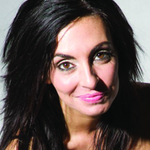With the summer of 2016 coming to a rapid close, now is the perfect time for dance teachers and studio owners to rev up for the upcoming new season. From personal experience, the fall always seems to be the time of year when my energy and creativity is at its peak and I can’t wait to get back into the studio to see what the new semester has in store!
There are so many things we as teachers and studio directors can do to ignite that enthusiasm amongst our dancers to get them off on the right foot; from Day #1. Success and progress is most easily achieved when students can take note of teachers’ transparent preparedness, eagerness to be in the studio teaching, creativity and commitment to ensure the progress of each individual dancer. This often times has a contagious effect on the whole environment and sets a wonderful tone running throughout the studio!
The following are some helpful hints and things I’ve done myself over the years to spark optimism, collaboration and consistent work ethic in my students beginning at the start of every new season!
1. The very first tip important to address on Day #1 (and over the course of the first month) is to really get to know your students. Even if you have returning students whom you have known for years, keep in mind that the summer is a vital time for kids to change right before your eyes; often coming back to school as new individuals; more mature and in a very different place from where they left you in June. Their physical, psychological and affective attributes change, so make this time your “reintroduction phase” for baseline assessment.
**From a physical/technical perspective, it is beneficial to find out if and where the students have danced over the summer. Even if your studio has (required) summer intensives, many students often take additional professional classes/workshops in the city or through summer programs to keep up or advance technique. Having that prior knowledge can be a good indicator of where they might be technically at the start of the year. While seeing it for yourself is always the best marker, making the first class especially (technically) challenging will be a great gauge for you as to where to then balance or adjust the level of your classes. It will also give your students a sense of how classes will resume for the current year, the class tone and your expectations of them.
As many of us encounter the adolescent aged demographic, be keen to observe the physical changes that might be challenges for the students as well. Are their bodies changing? Have they had a large growth spurt over the summer? Is puberty occurring and the female dancers’ bodies changing as to affect their center of gravity? Are there current injuries? Is there a noticeable increase or decrease in control, range of motion and/or flexibility, etc.? The quicker these important factors are are identified and taken into consideration, the quicker the teacher can set forth a plan of action to help dancers achieve the most productive year ahead!
**From a psychological perspective, keep in mind the changes that students will also be dealing with; as they might be starting the new-year while simultaneously trying to figure out who they are as individuals. This, is huge. Be patient. Their brains are in full developmental swing at this point and the notion to be extra inquisitive, question authority, your choices and just plain give you a run for your money might be very well prevalent! So… be prepared for all that comes along with the territory of training those entering the teenage years! Also remember, in tandem with the psychological and personality changes comes the affective perspective, so prepare yourself for the teen- angst and emotional component that has the potential to try and enter the studio. Setting the precedence on Day #1 of being sympathetic (after class) yet authoritative in leaving all that outside of class will keep relations between students amicable and keep your students on the task at hand!
Some other tips to liven up the start of the new-year include:
2. Keeping your warm-up and class structure new, technically challenging, appropriate and current will keep your dancers moving, but thinking as well! This creates an environment where students remain present in their space, focused and always thinking during class! In addition, don’t be afraid to add improvisation and creating elements to change up your curriculum as well!
3. Along with new warm-ups, across the floor combos and center-work, refresh that music! Make the new-year the opportunity to use class music that is out-of- the-box! Try music the students may never have heard of before, engage world cultures, different time periods, nature sounds, spoken-word, application of challenging rhythms and the unexpected! This will also add to the notion of keeping dancers thinking on their feet, consistently aware and excited! Using a range of tempos and time signatures will also help to create peaks and valleys as far as the energy level of class and help to add texture and dynamics to class structure.
4. Don’t forget to take the opportunity to revisit and discuss studio and class etiquette, dancer expectations, dress code, company contracts (if applicable,) etc. Taking time out to address these things on Day #1 will only make sure everyone is reminded of their responsibilities and accountable for the upcoming season.
5. Last but not least, take time to discuss individual and studio goals for the new-year! Talking as a group about what you as studio directors and teachers hope to accomplish will get your students on the same page and help them to open up about their own expectations and personal goals too! In the end, there will be a sense of camaraderie, readiness, determination and enthusiasm which will carry you all throughout the season!
Best of luck this season!
See you in the dance studio,
Jessie

